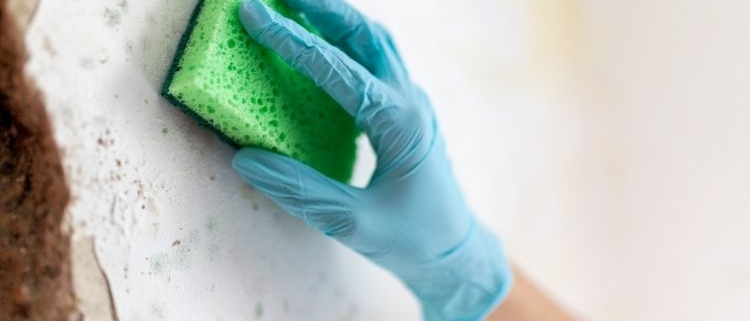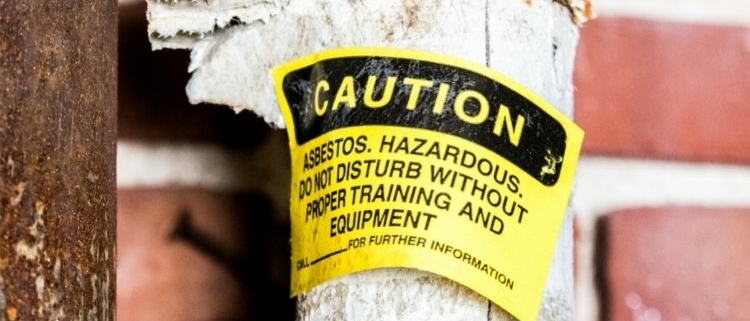What Is Asbestos? Asbestos is a naturally-occurring mineral fiber that can be positively identified only with a special type of microscope. There are several types of asbestos fibers, all of which are composed of long and thin fibrous crystals. Each fiber is composed of many microscopic “fibrils” that can be released into the air by abrasion and other means. What does abrasion mean? Abrasion is the process of scuffing, scratching, wearing down or rubbing away. In the past, asbestos was added to a variety of products to strengthen them and to provide heat insulation and fire resistance. However, in todays age, asbestos is a very well-known health and safety hazard. Breathing in of asbestos fibres can lead to serious lung conditions, including asbestosis and cancer.
How Can Asbestos Affect Human Health? From studies of people who were exposed to asbestos in factories and shipyards, we know that breathing high levels of asbestos fibers can lead to an increased risk of lung cancer in the forms of mesothelioma, which is a cancer of the lining of the chest and the abdominal cavity, and asbestosis, in which the lungs become scarred with fibrous tissue. Even though many steps were taken in its prohibition in mainstream construction we can still see the effects. Exposure can take decades to arise, at least 100,000 people are thought to die each year from diseases related to asbestos exposure.
Asbestos Do’s and Don’ts for Homeowners.
- Do: leave undamaged asbestos-containing materials alone.
- Do: take every precaution to avoid damaging asbestos-containing material.
- Do: have removal and major repair done by qualified licensed asbestos contractor. It is highly recommended that sampling and minor repair also be done by a trained and accredited asbestos professional.
- Don’t: dust, sweep, or vacuum debris that may contain asbestos.
- Don’t: saw, sand, scrape, or drill holes in asbestos-containing materials.
- Don’t: sand or try to level asbestos flooring or its backing.
- Don’t: track material that could contain asbestos through the house. If you cannot avoid walking through the area, have it cleaned with a wet mop. If the material is from a damaged area or if a large area must be cleaned, call a licensed asbestos professional.
Where Would Asbestos Be Found, and When Can it Be a Problem? Most products made today do not contain asbestos. Those few products made which still contain asbestos that could be inhaled are required to be labeled as such. However, asbestos was widely used during the 20th century until the 1970s, many types of building products and insulation materials used in homes contained asbestos. Common products that might have contained asbestos in the past, and conditions which may release fibers, include:
- steam pipes, boilers and furnace ducts insulated with an asbestos blanket or asbestos paper tape. These materials may release asbestos fibers if damaged, repaired, or removed improperly;
- resilient floor tiles (vinyl asbestos, asphalt and rubber), the backing on vinyl sheet flooring, and adhesives used for installing floor tile. Sanding tiles can release fibers, and so may scraping or sanding the backing of sheet flooring during removal;
- cement sheet, millboard and paper used as insulation around furnaces and wood-burning stoves. Repairing or removing appliances may release asbestos fibers, and so may cutting, tearing, sanding, drilling, or sawing insulation;
- door gaskets in furnaces, wood stoves and coal stoves. Worn seals can release asbestos fibers during use;
- soundproofing or decorative material sprayed on walls and ceilings. Loose, crumbly or water-damaged material may release fibers, and so will sanding, drilling or scraping the material;
- patching and joint compounds for walls and ceilings, and textured paints. Sanding, scraping, or drilling these surfaces may release asbestos fibers;
- asbestos cement roofing, shingles and siding. These products are not likely to release asbestos fibers unless sawed, dilled or cut;
- artificial ashes and embers sold for use in gas-fired fireplaces, and other older household products, such as fireproof gloves, stove-top pads, ironing board covers and certain hairdryers
- vermiculite has been used in industrial applications and has been used as insulation. Some deposits of vermiculite have been found to be contaminated with small amounts of asbestos.
What Should Be Done About Asbestos in the Home? If you think asbestos may be in your home, there is no need to panic. Usually, the best thing to do is to leave asbestos material that is in good condition alone. Generally, material in good condition will not release asbestos fibers. There is no danger unless the asbestos is disturbed and fibers are released and then inhaled into the lungs. Check material regularly if you suspect it may contain asbestos. Don’t touch it, but look for signs of wear or damage, such as tears, abrasions or water damage. Damaged material may release asbestos fibers. This is particularly true if you often disturb it by hitting, rubbing or handling it, or if it is exposed to extreme vibration or air flow. Sometimes, the best way to deal with slightly damaged material is to limit access to the area and not touch or disturb it. Check with local health, environmental or other appropriate agencies to find out proper handling and disposal procedures. If asbestos material is more than slightly damaged, or if you are going to make changes in your home that might disturb it, repair or removal by a professional is needed. Before you have your house remodeled, find out whether asbestos materials are present.
Who Should Remove and Dispose of Asbestos? In the United States, the EPA governs the removal and disposal of asbestos. Companies that remove asbestos must comply with EPA licensing. These companies are called EPA licensed asbestos contractors. Anytime one of these contractors performs work a test consultant has to conduct strict testing to ensure the asbestos is completely removed.
What Methods to Remove Asbestos? One method that can be used is asbestos abatement which is a set of procedures designed to control the release of asbestos fibers from asbestos containing materials. Anytime where asbestos abatement is taking place, occupants of the home are not allowed to enter the area. Typically, the area of which the asbestos is being removed has to be sealed off in order to prevent contamination to other parts of the home or area. To seal off an area, materials used are polyethylene film, duct tape and negative air pressure machines which are fitted with HEPA filters. The main idea is that the contained area is pulling fresh air in as to not let asbestos fibers escape out into the surrounding environment. It also may be necessary to seal off from the outside atmosphere so that no accessible air is contaminated.


